Driving customer loyalty: Identify, keep, and grow your most loyal customers
Retaining your most loyal customers is crucial for every business because not only are they your most valuable customers, but it makes good business sense. This is because it’s seven-times more expensive to acquire new customers than it is to retain your existing ones.
In this article we’ll walk you through the process of identifying, engaging, and growing your most loyal customers by using your customer data in the Lexer CDXP.
There are lots of different methods you can use to identify your most loyal customers, and throughout this article we’ll provide examples for how you can do this by spend, frequency, and timeframe. These methods are especially effective if you don’t currently have a loyalty or rewards program.
So, let’s get into it!
Identifying your most loyal customers by spend
We’re going to start off by walking through how you can identify your most loyal customers by spend.
But first, a little context! Have you ever heard of the Pareto Principle? If not, you’re in the right place, because using the Pareto Principle can be a great way to identify your most loyal customers by spend.
The Pareto Principle states that 80% of your outcomes come from 20% of your input. So, using revenue as an identifier (and applying the Pareto Principle) means that, generally, the top 20% of your customers contribute to approximately 80% of revenue. But, you will need to do some calculations in your own hub to find what that percentage is for your set of customers. You may find that the top 30%, or 40%, of customers make up 80% of your revenue. Knowing this will help you make some good segmentation decisions when targeting your high-value customer base.
But, let’s walk through how you can find your top 20%.
Navigate to Understand > Segment in the top navigation bar, and this will take you to the Segment Builder.
To create your segment, search for, and add, the following attributes to the PROFILES MUST HAVE ALL OF THESE section of the builder:
- Spend Decile > Between > 9 to 10
- Active customers segment
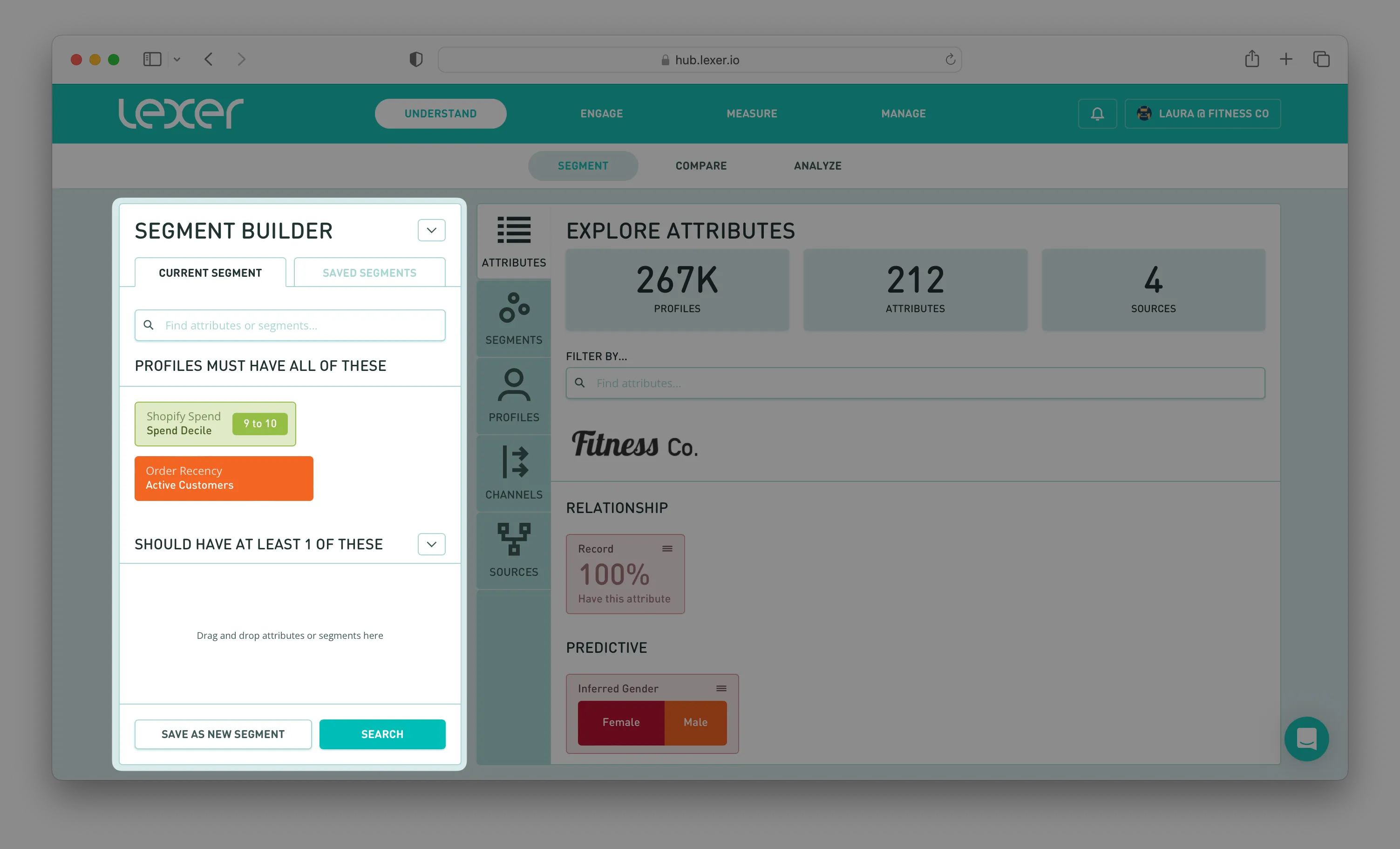
This query will find your top 20% of customers by spend, who have also shopped in the last 12 months (so you know they’re active).
To gain a better understanding of how much revenue these customers have generated for your brand, move to the right of the Segment Builder, and under EXPLORE ATTRIBUTES search for Total Spend.
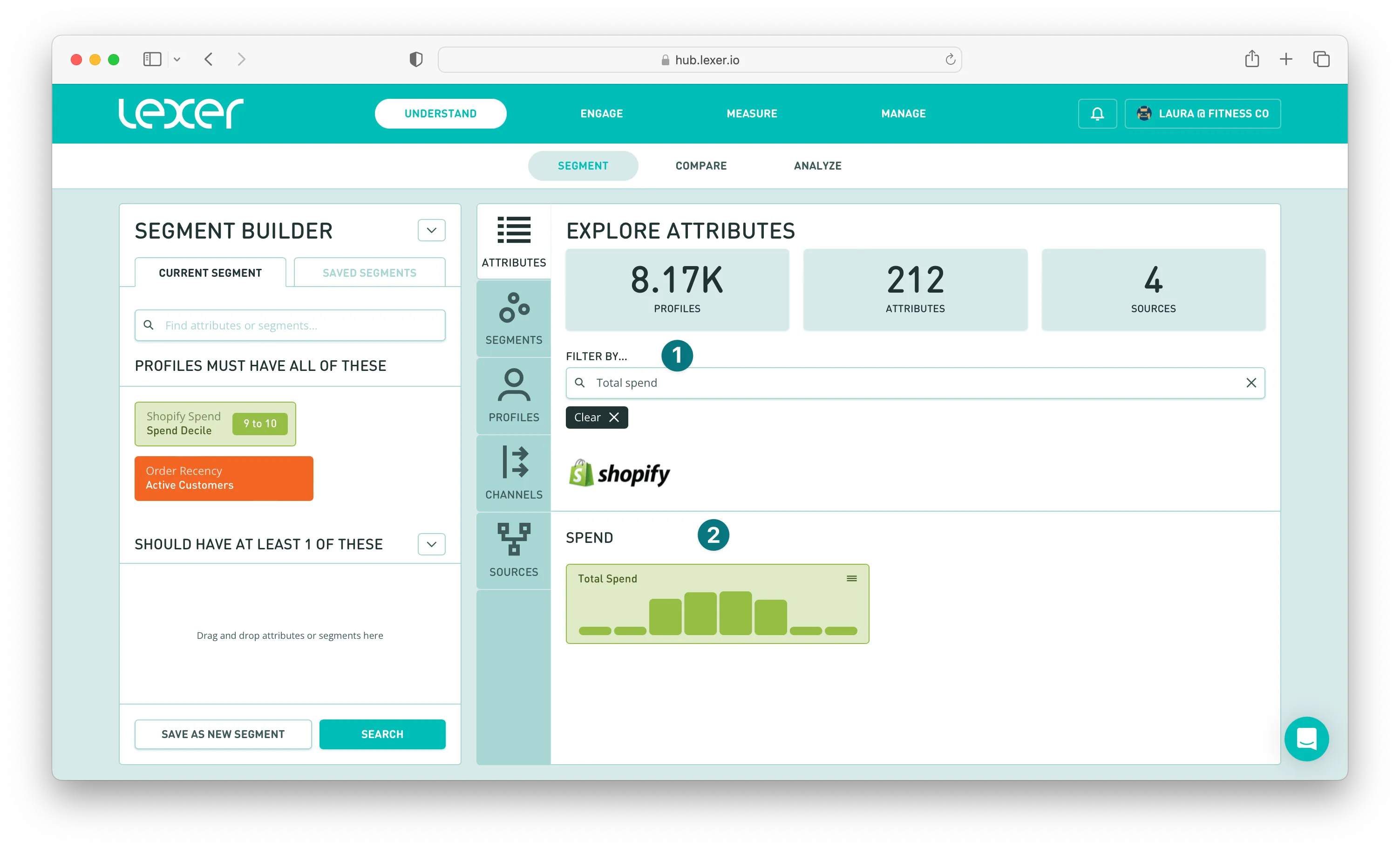
If you click on the Total Spend attribute, a new window will pop up from the right of the screen with more information on how total spend is distributed across your top 20% of active customers.
You can see their total revenue, plus what their average lifetime value is.
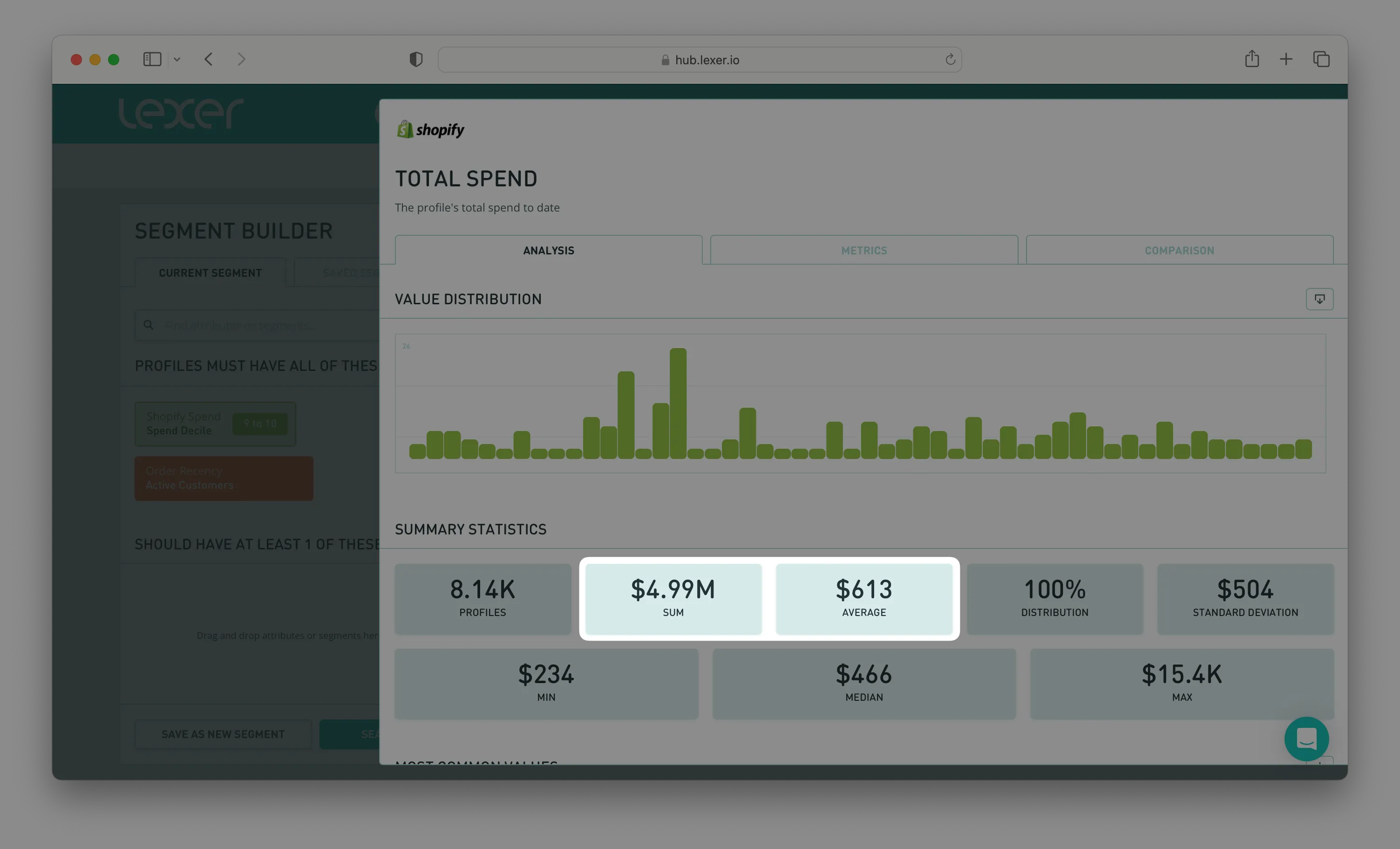
If you’d like to calculate the percentage of revenue these customers have generated for your brand overall, then it’s a simple calculation:
Total revenue of your top 20% (the 4.99M in the screenshot above) divided by total revenue of all customers. Then multiply this number by 100.
Identifying your most loyal customers by frequency
Now that you know how to find your most loyal customers by spend, lets learn how to find your most loyal customers by frequency.
Customers who continue to make frequent purchases are generally very loyal, and you can keep them loyal by offering them extra perks and benefits.
Here’s how to find loyal customers with multiple orders.
Firstly, you want to find out how many orders your average customer makes. To do so, add the All Customers segment to the Segment Builder, and hit Search.
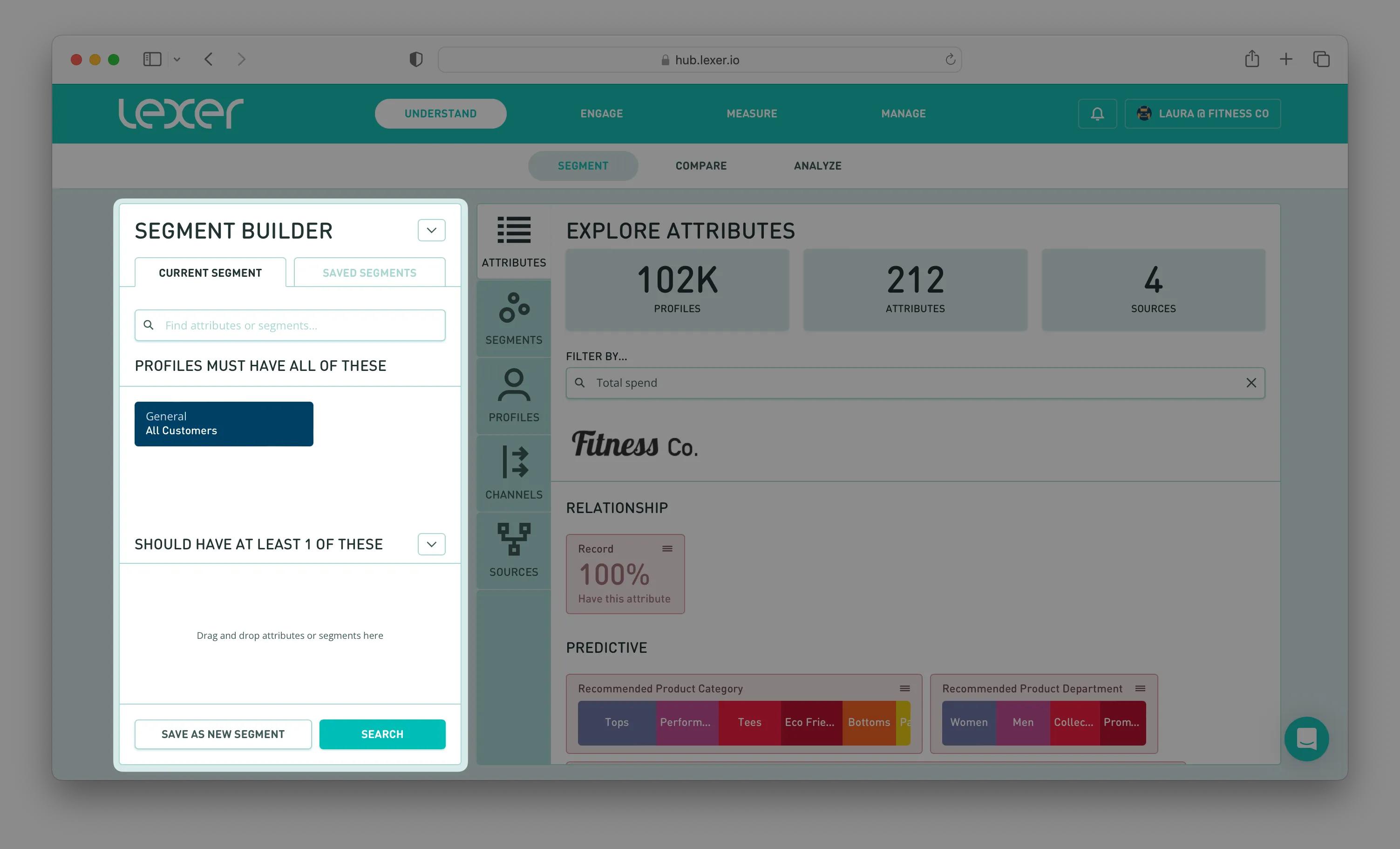
Then move to the right of the Segment Builder and under EXPLORE ATTRIBUTES search for Total Orders.
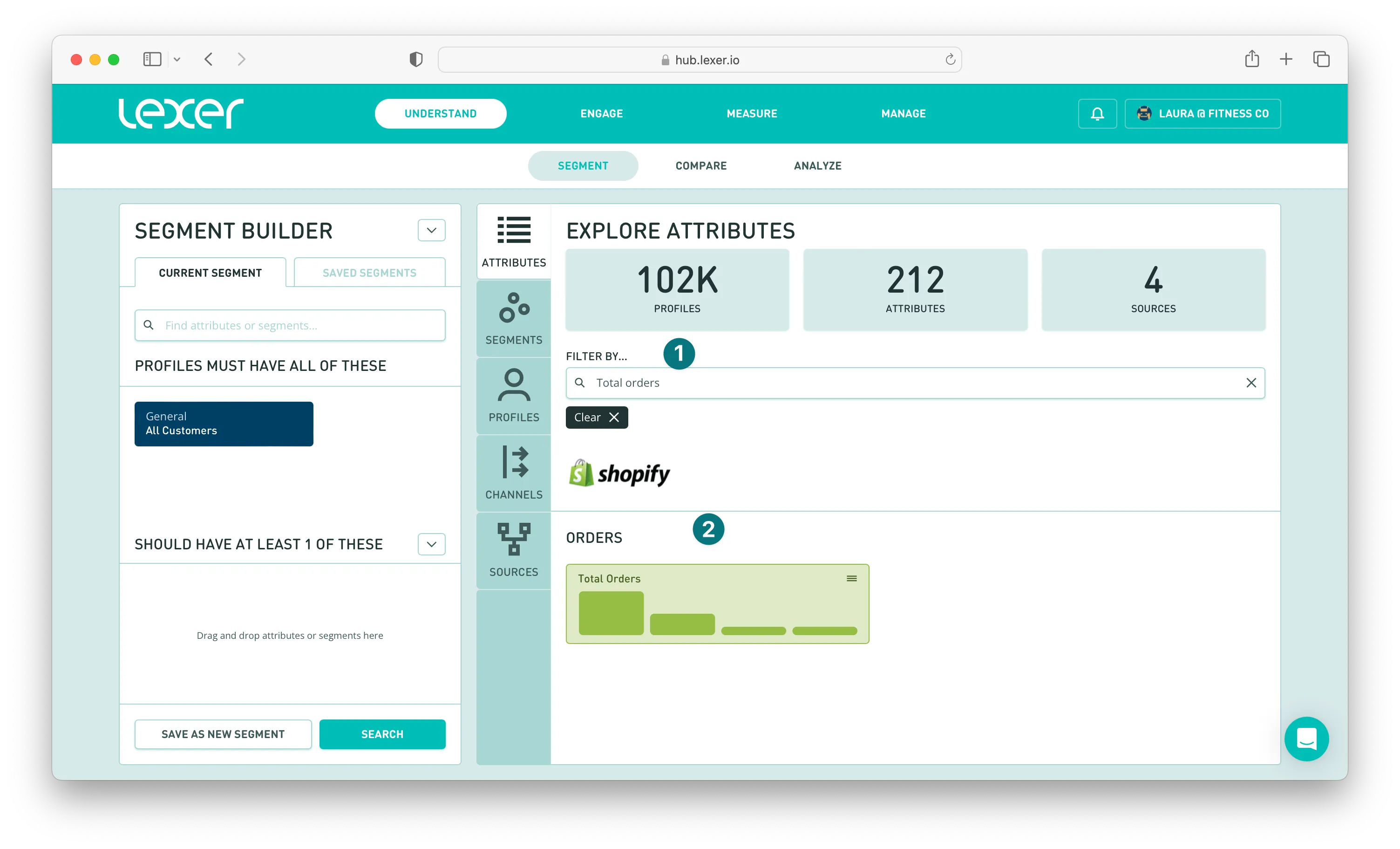
Click into this attribute and scroll down to Summary Statistics. Here you’ll see that the average total orders is 1.87.

This is an average customer though, so let’s define our most loyal customers as those who have made 3 or more total orders.
To find this segment of customers, search for, and add, the Total Orders attribute to the PROFILES MUST HAVE ALL OF THESE section of the builder. Then filter for Greater than or equal to 3.
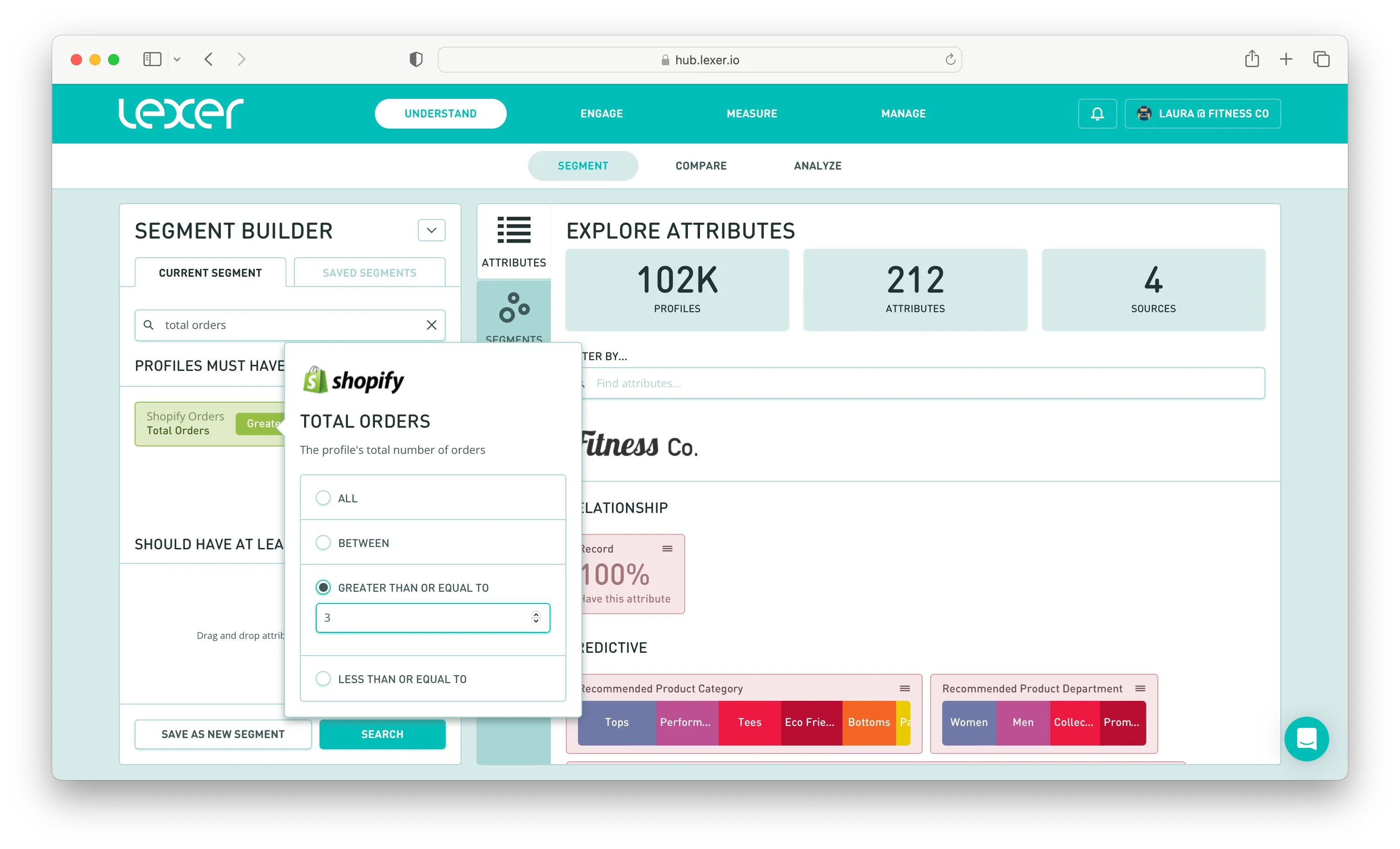
Hit search, and you’ll get the number of profiles with 3 or more orders. In this case it’s 18.8K of your customers, and now you have a loyalty segment you can target for special offers and discounts to encourage more future purchases.
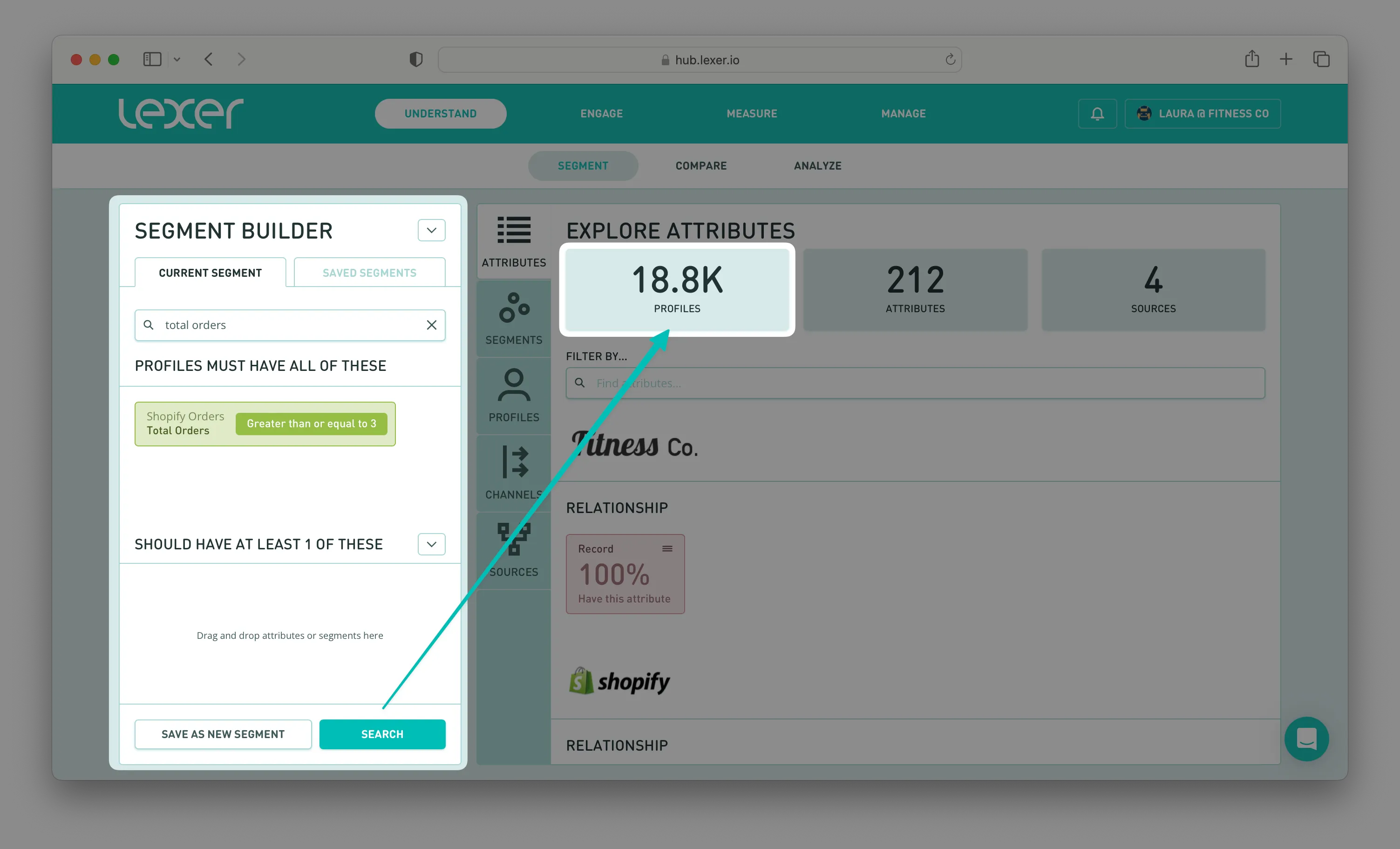
Identifying your most loyal customers by year on year purchases
Sometimes, great customers only make purchases during a specific season, but they return each year. For example, they might be shopping for someone’s birthday, and they love your brand, so they buy their gift from you!
These customers are also loyal, even though they might not be the highest contributors to revenue, or the most frequent shoppers. You still want to show them how much you value them as a returning customer.
Here’s an example of how to find returning customers who only shop during the end-of-year festive season.
Firstly, add the following attributes to the PROFILES MUST HAVE ALL OF THESE section of the Segment Builder:
- First Order: Date > Between > 1 November 2020 - 31 December 2020
- Total Orders: > Greater than or equal to > 2
- Last Order: Date > Between > 1 November 2022 - 31 December 2022

What this query is searching for is customers who have shopped for the first time during the end-of-year festive season, have made two or more orders, and the last time they’ve shopped was during the end-of-year festive season.
These are still loyal customers, they just shop seasonally, and that’s okay!
But, now that you know who your most loyal customers are, how do you make sure you keep them?
Keeping your most loyal customers engaged
Here are a few ideas you can use to keep your best, and most loyal customers, engaged (even without a loyalty program!):
- Early access to sales
- Sneak peeks into new product launches
- VIP events
- VIP discounts
- Exclusive content
- Birthday incentives (and we have a great article here that can show you how)
- Free, or expedited, shipping
- Points (if using a reward program)
Growing your loyal customer base
Finally, you now know how to identify your most loyal customers, plus you have some suggestions for how to provide value to them, so let’s finish up by walking through how you can grow more of them!
You want to grow from within your existing customer base (because this is a lot cheaper than acquiring new customers). So, learn from your loyal customers. What do they love about your brand, and what makes them so loyal?
You can use Lexer’s Form Builder to find out!
Show these customers that you care and are always looking for ways to improve their experience.
Ask question like:
- What do you love about our brand?
- How can we improve your experience?
- What would you love to see us offer next?
- What makes us better than our competitors?
- Who do you generally shop for when buying from our brand?
Use these insights to lean into what you excel at, and personalize your messaging! Use their first name when sending comms, for example.
Now, use the information provided by your most loyal customers, to target the rest of your customer base.
But, if you’d also like to acquire new customers who match the attributes of your most loyal customers, then you can do that too.
Using the loyalty segments you set up earlier in the article, you can target lookalikes through social channels like Facebook.
Simply set up a new activation to Facebook Ads using your loyalty segments. For a refresher, we have this handy article here.
Identifying and incentivizing your most loyal customers
And there you have it! You’ve identified your most loyal customers, determined the best ways to reward and engage them, and even how to grow more of them!
If you have any questions, feel free to reach out to your Success Manager, or contact Lexer Support.

